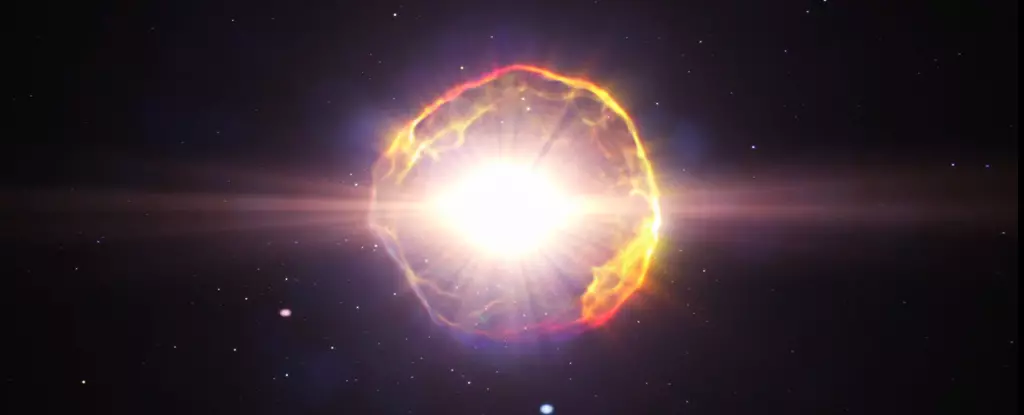In the vast expanse of the night sky, a captivating event is poised to unfold – the eruption of a “new star” or nova. Among the myriad celestial bodies that grace the heavens, T Coronae Borealis (T CrB) stands as a unique and enigmatic entity. Nestled in the constellation of the northern crown, T CrB offers a spectacle that is not only visually striking but also scientifically intriguing. Although it may not dazzle with the intensity of a supernova, witnessing a nova is a distinct privilege due to its sporadic nature and elusive predictability.
At a distance of 3,000 light years away, T CrB resides as a white dwarf, a stellar remnant that has transitioned beyond the fervor of its prime. In symbiotic harmony, it is accompanied by a red giant companion that has gracefully aged into its twilight years. The interplay between these stellar partners results in a mesmerizing dance of cosmic proportions. The red giant sheds its outer layers, which are then gravitationally siphoned by the white dwarf, forming an accretion disc that envelops the deceased star. This influx of matter triggers a cataclysmic chain reaction within the white dwarf, leading to a temporally heightened luminosity that illuminates the night sky with unprecedented brilliance. This eruption casts a transient glow upon T CrB, marking its emergence as a nova before receding into obscurity once more.
T CrB belongs to a select cadre of recurrent novae, a classification reserved for stellar phenomena that reoccur within a century timescale. This unique attribute enables astronomers to discern their cyclic nature, providing a window into the intricate workings of these enigmatic stars. Among the ten known recurrent novae, T CrB reigns as the most luminous and recurrent member, offering a glimpse into the cyclical metamorphosis that unfolds in the depths of space. The historical record of T CrB’s eruptions dates back to the year 1217, underscoring the enduring fascination that this cosmic entity instills in both professional astronomers and amateur stargazers alike. The recent prelude to T CrB’s impending eruption, marked by a subtle increase in brightness and a subsequent dimming, serves as a herald of the celestial spectacle that is poised to enrapture the night sky.
As the celestial clock ticks closer to the anticipated eruption of T CrB, avid stargazers are poised to witness this astronomical marvel firsthand. The strategic observation of Corona Borealis as it ascends to its zenith around 8:30pm to 9pm local time across Australia and Aotearoa offers a prime vantage point to behold the imminent nova. The convergence of the red giant’s exhalations and the white dwarf’s incandescence culminates in a luminous display that rivals the splendor of neighboring celestial bodies. In the midst of urban sprawl or rural solitude, the nova’s radiance promises to captivate observers with its celestial ballet before yielding to the undertow of cosmic forces. The vigilance of amateur astronomers, who diligently monitor the night sky for signs of stellar upheaval, stands as a testament to the collaborative spirit that permeates the astronomical community. Their steadfast dedication ensures that the celestial narrative of T CrB is meticulously chronicled, enriching our understanding of these cosmic spectacles.
The impending eruption of T Coronae Borealis offers a rare opportunity to witness the awe-inspiring beauty of a recurrent nova. As the celestial stage is set for this cosmic performance, astronomers and stargazers alike are poised to embark on a journey of discovery and wonder. The celestial mosaic of T CrB serves as a poignant reminder of the dynamic nature of the universe and the enduring allure of the night sky. So, cast your gaze skyward and behold the celestial ballet of T Coronae Borealis, as it offers a fleeting glimpse of the cosmic splendor that awaits us in the vast expanse of space.


Leave a Reply